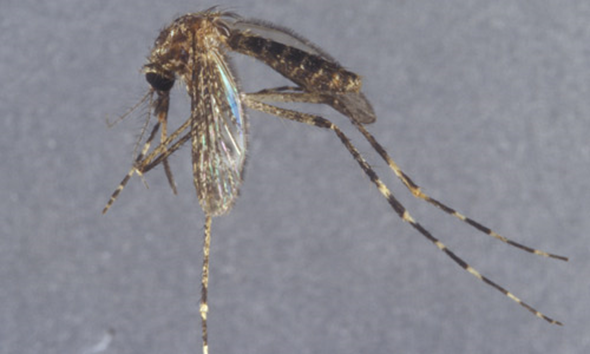Common name: Cattail mosquito

Adult female Coquillettidia perturbans, Photograph by Lyle J. Buss, Entomology and Nematology Department, University of Florida
- Geographic Distribution
Coquillettidia perturbans mosquitoes are found throughout the United States, southern Canada and parts of Mexico. This mosquito can be found throughout Indiana.
- Life Cycle
Coquillettidia perturbans lay their eggs to form an egg raft in permanent freshwater near emergent aquatic plants. The larvae and pupae attach to the roots of emergent vegetation, especially cattails for respiration through a sharp modified air siphon. Since they breathe through vegetation, C. perturbans can avoid the water surface where they could encounter predators and some larvicides. C. perturbans complete four aquatic larval instars. Pupal development can range from a few hours to a few weeks depending on temperature.


(left) Coquillettidia breeding habitat, Photo Credit: Lee Green, IDOH (right) Coquillettidia larva modified air siphon, Photo credit: CDC
Female Coquillettidia perturbans are persistent and painful biters that can be a great nuisance to humans and animals. They are most active during the early evening hours but can also seek blood meals during the day in shady areas where adult mosquitoes are resting.
- Commonly Associated Diseases
- Prevention
The best way to prevent diseases associated with Coquillettidia perturbans mosquitoes is to avoid mosquito bites. Please see our mosquito bite prevention page for more information.
